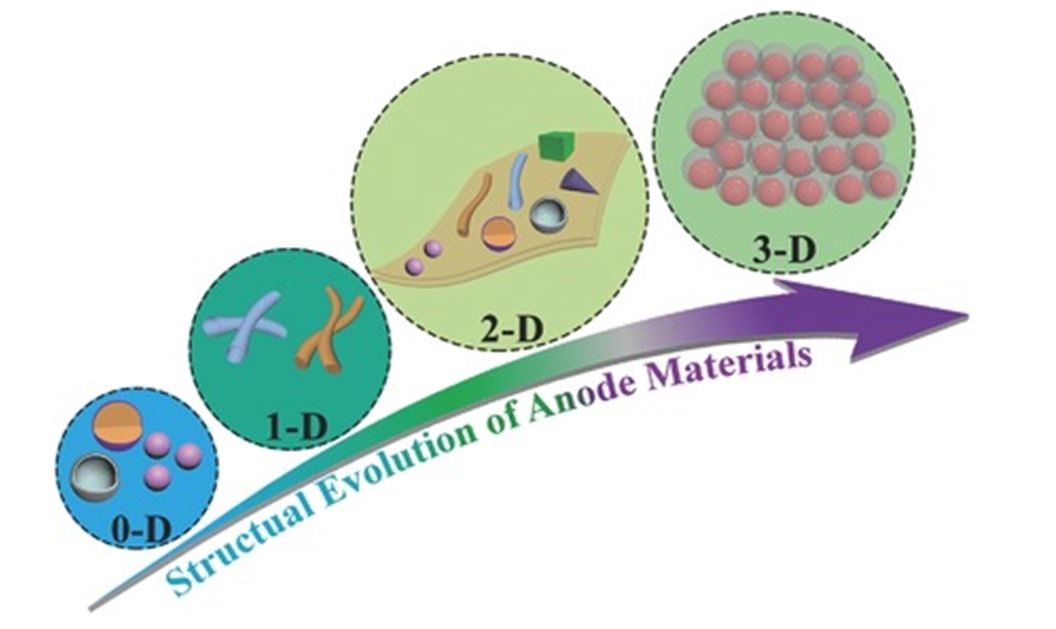Video Article Open Access
Manipulation of Internal Chemistry of Electrode Materials for Energy Storage and Conversion
Nasir Mahmood
School of Engineering, 124 La Trobe Street, RMIT University, 3001 Melbourne, Australia
Vid. Proc. Adv. Mater., Volume 2, Article ID 2021-02122 (2021)
DOI: 10.5185/vpoam.2021.02122
Publication Date (Web): 30 Mar 2021
Copyright © IAAM
Graphical Abstract

Abstract
The nanostructuring and tuning of chemistry at a molecular level have introduced new concepts into mechanisms of charge conversion and storage in electrochemical devices. New insights into molecular nanomaterials are expected to give birth to advanced technologies in next generation devices that can touch the theoretical prediction of electrochemical energy conversion and storage with ability to deliver energy rapidly and efficiently.
Here, we have developed several electrodes/catalysts materials based on transition metal oxides, selenides, phosphides as well as their hybrids with carbon nanostructures through wet chemistry and physical methods to overcome the issues of poor cyclic stability and limited activity through internal chemistry manipulation. The resulted structures have rationally tuned surface chemistries inherited from their defective structures and/or unsatisfied surface atoms as well as strong synergy in hybrids to perform exceptional functionalities. Enhanced catalytic activities/capacities of these materials are observed due to their tunned material features.
We have found very exciting results by achieving highly stable performances for batteries up to 5000 cycles using our self-tuneable carbon nanostructures. While achieved high areal capacity for sodium battery up to 4.0 and 7.03 mAh/cm2 for molybdenum and cobalt selenide-based 3D heterostructures with CNTs, moreover, excellent compressibility of hybrid allows high mass loading of 13.9 and 17.04 mg/cm2. Further, we have also developed lightweight flexible electrodes based on polyimide having laser induced graphene on the surface, showed excellent performance by delivering an areal capacity of 280 μAh/cm2, maintained the performance even in fully folded form while separated by the non-conductive polymer. A step forward towards excellent electrochemical energy storage for lightweight and flexible electronics as well as assisting in developing comfortable wearable electronics.
Further, iron and cobalt oxides/phosphides-based catalyst materials delivered the current densities up to 350 mA/cm2 required for the commercialization of water electrolysis at an extremely low voltage of 1.40 V. Thus, water catalysis at low potential with long term stability showing their capability to be deployed in commercial electrolysers. Recently, we also found that by developing 2D heterostructures with the genuine features of unilamellar sheets of two different materials will be very exciting, which can revolutionize various technological fields, especially the energy sector.
Keywords
Metal-ion batteries; water-splitting; electrocatalysts; anode; transitional metals.
Acknowledgement
The authors would like to acknowledge the Vice-Chancellor fellowship scheme at RMIT University, the RMIT Micro Nano Research Facility (MNRF) in the Victorian node of the Australian National Fabrication Facility (ANFF), the RMIT Microscopy and Microanalysis Facility (RMMF) to support this work.
References
- M. Yousaf & N. Mahmood, et al. Advanced Energy Materials, 2019, 9, 1900567.
- M. Mohiuddin & N. Mahmood, et al. Journal of Materials Chemistry A, 2020, 8, 2789-2797
- N. Mahmood & K. Kalantar-Zadeh, et al. Energy Storage Materials, 2019, 16, 455-480.
- T. Daeneke & N. Mahmood, et al. Chemical Society Reviews, 2018, 47, 4073-4111.
- R. Zhang & N. Mahmood, et al. ACS Catalysis, 2018, 8, 3803-3811
- N. Mahmood & J. Zou, et al. Advanced Science, 2018, 5, 1700464.
Biography
Nasir Mahmood is a materials engineer at RMIT University, obtained his PhD from Peking University with distinction in 2015, internationally known for his innovative developments in advanced materials for sustainable society, especially for energy storage and conversion, health, wastewater and environment. He obtained his BS in chemistry from institute of chemistry, University of Punjab in 2009 and MS in Materials Science and Surface Engineering from School of Chemical and Materials Engineering, National University of Science and Technology, Pakistan in 2011. His early career began at the University of Wollongong, Australia (2015-16) followed by securing a research fellow position at Tianjin University, China (2016-17). As an early career researcher, he has an excellent track record in publishing high-quality publications >90 with high citations >5800 and H-index of 35, 2 patents, 10 books/book chapters, commercialization, attracting research funding and media attentions, managing editorial responsibilities and organizing conferences. He has been awarded several prestigious awards including Beijing Science and Technology Award by Municipal Government of Beijing, China in recognition to his contribution in technological and economic advancement of Capital City Beijing and RMIT Vice Chancellor Fellowship. His research expertise has been recognized through invited national and international talks and colloquia, excellency awards and publication/presentation prizes. He is also a co-Editor-in-Chief for Frontiers in Molecules and Frontiers in Materials and Nanoscience as well as Guest Associate Editor for Frontiers in Chemistry.
Video Proceedings of Advanced Materials

Upcoming Congress



